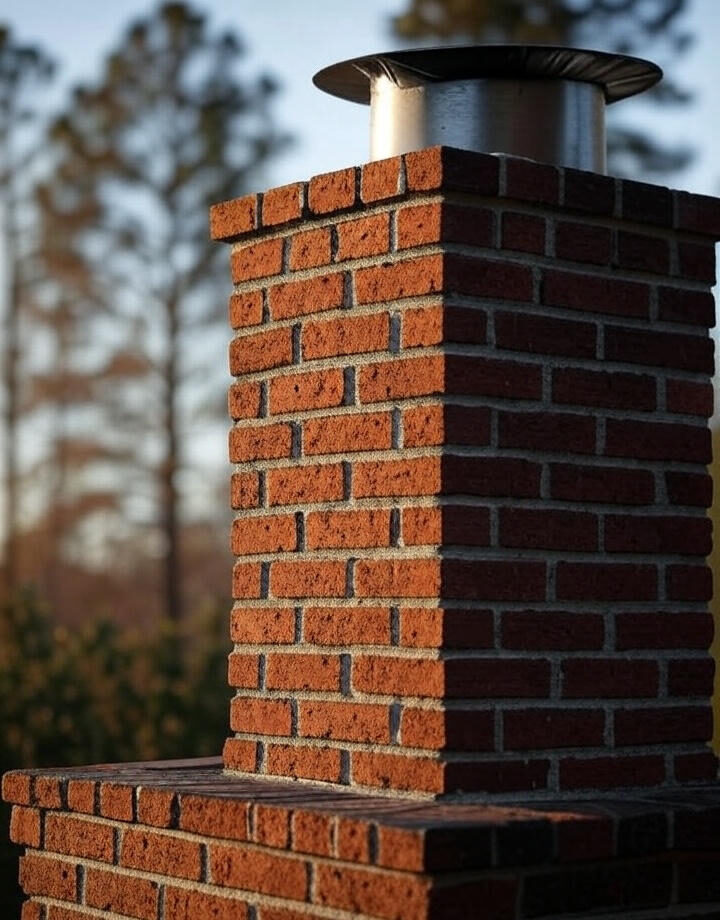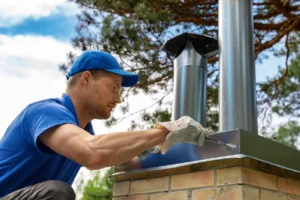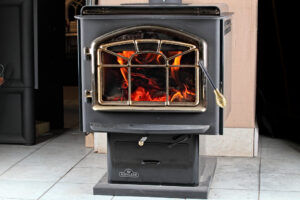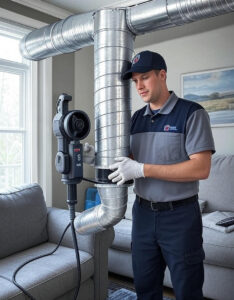
Chimney Liner
If you live in Costa Mesa, chances are you enjoy the occasional cool evening by the fireplace. It’s cozy, it’s calming, and let’s be honest—it makes your home feel a little more complete. But behind the crackling flames is a hidden hero you probably don’t think about much: the chimney liner. When that liner starts to fail, it can cause some sneaky (and sometimes dangerous) problems. Knowing the warning signs can save you a lot of headaches, repair bills, and even safety risks. So let’s break down the real-life signs that your Chimney Liner may be in trouble.
Why the Chimney Liner Matters (More Than You Think)
Think of the liner as a protective shield between the fire in your fireplace and the walls of your chimney. Without it, the bricks and mortar are exposed to extreme heat and corrosive gases, which can slowly eat away at the structure. In Costa Mesa, where many older homes still have their original fireplaces, chimney liners are often overlooked during routine maintenance.
Here’s the simple truth: a well-kept liner means a safer, more efficient fireplace. Ignore it, and you risk costly repairs—or worse, a fire hazard. As one seasoned chimney sweep once said:
“Your chimney liner is like the brakes on your car—you only notice it when it fails, and by then, it’s often too late.”
Crumbling Mortar or Flaking Tiles
One of the first signs you might spot is debris inside your fireplace. If you notice small pieces of tile, mortar, or even sand-like material, it could mean the liner is starting to deteriorate. This is especially common in clay tile liners, which were standard in many Costa Mesa homes built decades ago.
These flakes aren’t just annoying to sweep up—they’re a red flag that your chimney’s protective barrier is breaking down. Once the liner cracks or crumbles, heat and smoke can escape into places they shouldn’t.
Pro tip: If you notice unusual debris after using your fireplace, don’t just vacuum it up and forget about it. Schedule an inspection.
Strange Odors When the Fireplace Isn’t in Use
A failing chimney liner often makes itself known through smell. That smoky, musty, or even burnt-wood odor lingering in your living room could mean that creosote is leaking through cracks in the liner. In Costa Mesa’s coastal climate, moisture mixes with that creosote, making odors even stronger and harder to ignore.
Besides being unpleasant, this is also a safety concern. Creosote is highly flammable. If it’s seeping into gaps, it can create hot spots that increase the risk of a chimney fire.
Staining on Walls or Ceiling Near the Chimney
Have you noticed yellowish or brownish stains around your chimney walls or on the ceiling nearby? That could be smoke or moisture escaping through damaged liner sections. This usually shows up when the damage has already progressed—meaning it’s a sign you shouldn’t ignore.
In many Costa Mesa homes, the salty ocean air accelerates masonry wear, which puts even more pressure on the liner to do its job. When the liner fails, the results literally show up in your paint and drywall.
Poor Fireplace Performance
Sometimes, the signs aren’t visible at all—they’re functional. Maybe your fire struggles to stay lit, or smoke comes back into the room instead of venting outside. A damaged liner can disrupt airflow, making your fireplace less efficient.
If you’ve had your chimney cleaned but you’re still dealing with performance issues, it might be the liner at fault.
Safety and Cost Snapshot
Here’s a simple comparison to help you see why fixing a liner issue early makes sense:
| Feature | Safe & Maintained Liner | Failing or Damaged Liner |
|---|---|---|
| Safety Level | High – keeps heat, gases, and creosote contained | Low – risk of fire, carbon monoxide leaks |
| Fireplace Efficiency | Strong airflow, easy ignition | Poor airflow, smoky room |
| Maintenance Costs | $150–$300/year for cleaning and inspection | $2,000–$7,000+ for repairs or full replacement |
| Home Value Impact | Adds safety and buyer confidence | Can lower home value due to repair risks |
FAQs
Q: How often should I have my chimney inspected?
A: Once a year is the standard recommendation. In coastal areas like Costa Mesa, moisture makes inspections even more important.
Q: Can I repair a chimney liner, or does it always need replacement?
A: Some liners can be relined with stainless steel or cast-in-place materials, which may be cheaper than full replacement.
Q: Is it safe to use my fireplace if I suspect liner damage?
A: No. If you think your liner is compromised, it’s best to stop using the fireplace until a professional takes a look.
Q: What type of chimney liner lasts the longest?
A: Stainless steel liners are often the most durable and low-maintenance option, especially in areas with high moisture exposure.
Final Thoughts
A failing chimney liner isn’t something you want to put on the back burner—literally. From odd smells to crumbling debris and poor fireplace performance, the warning signs are usually there if you know what to look for. In Costa Mesa’s coastal climate, paying attention to these signs is even more important, since moisture and salt can accelerate wear.
Regular inspections, timely repairs, and a little preventative care can keep your home safe, your fires cozy, and your wallet a whole lot happier. If you ever suspect something’s wrong, call a professional and let them do what they do best. After all, peace of mind is worth way more than skipping an inspection.
Read More: Costa Mesa Chimney Sweep





